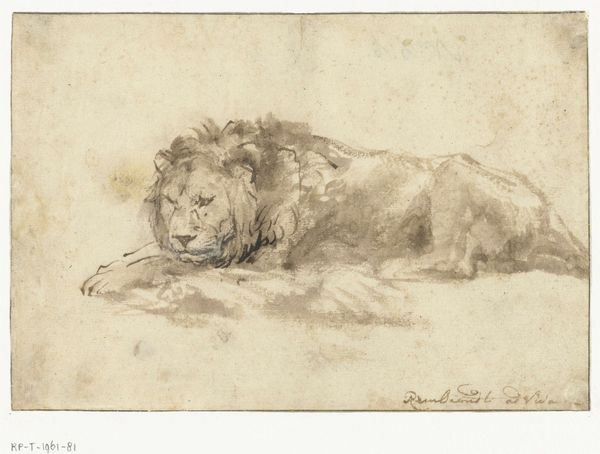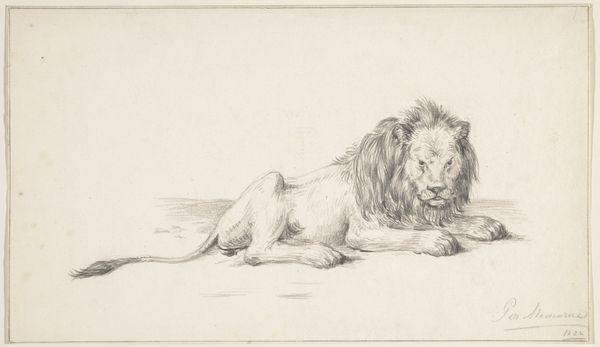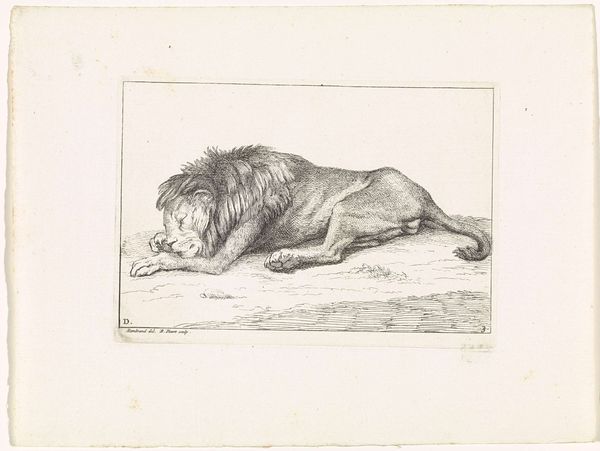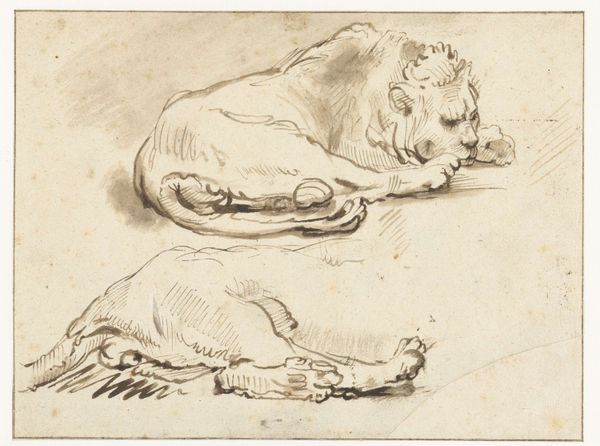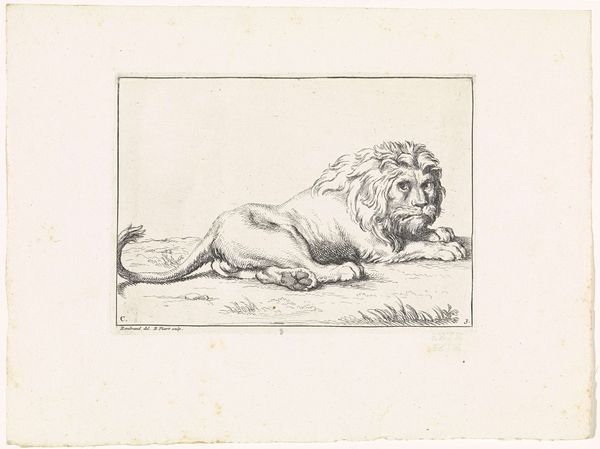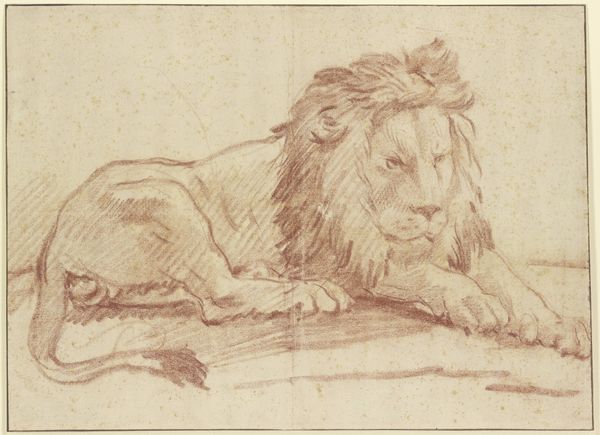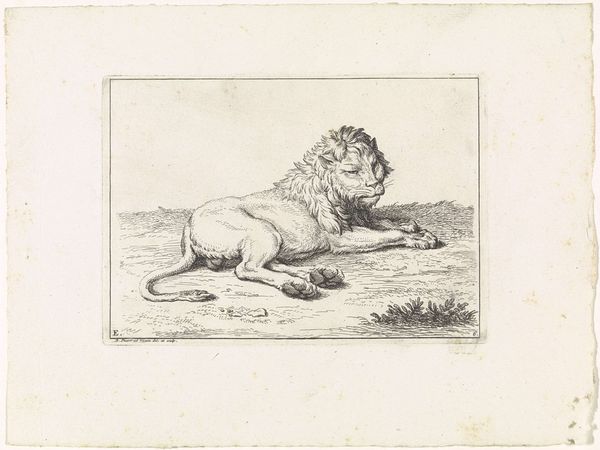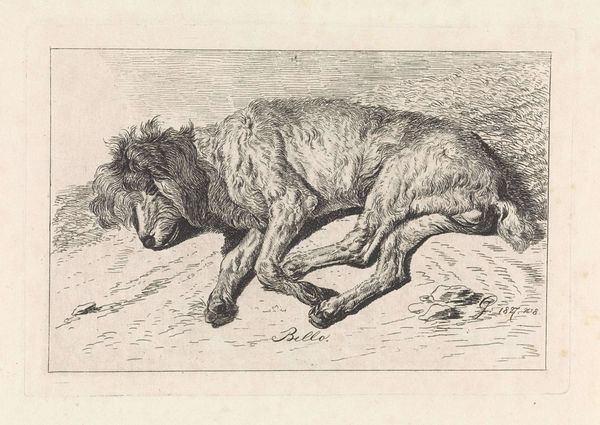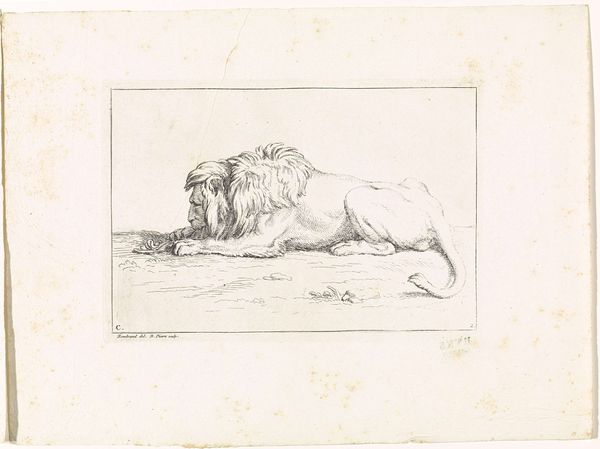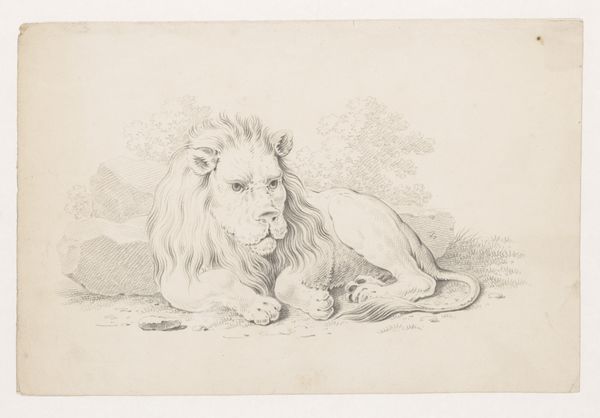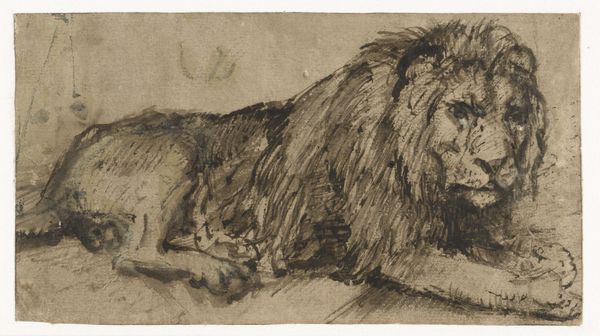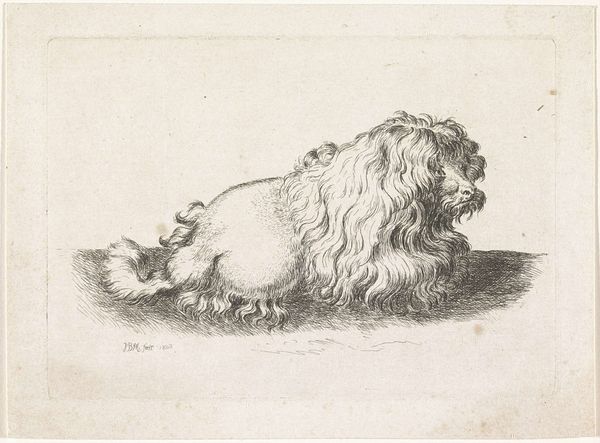
drawing, paper, ink
#
drawing
#
animal
#
paper
#
ink
#
pencil drawing
#
underpainting
#
genre-painting
#
watercolor
#
realism
Dimensions: height 125 mm, width 187 mm
Copyright: Rijks Museum: Open Domain
Curator: Here we have Rembrandt van Rijn's "Reclining Lion with its Forepaw over its Muzzle," created sometime between 1640 and 1650. It’s a beautiful drawing rendered in ink on paper. Editor: My first impression is just how tired he looks! The pose, with the paw shielding its face, gives the sense of a creature world-weary, despite its inherent power. Curator: That weariness speaks to something deeper. In the 17th century, the lion, while still a symbol of power and royalty, also began to be viewed through the lens of colonial exploitation and human dominance. Consider how many lions would have been brought to Europe from Africa and Asia for display or entertainment. This lion, rendered so realistically, is divested of much of its mythic quality. Editor: And that's precisely what draws me to the process and materiality here. It’s ink on paper – common, accessible materials. There's no gilding, no marble. Rembrandt’s choice undermines the traditional symbolism associating lions with opulence. He’s using simple tools to depict this king, emphasizing the animal's physical presence, the weight of its body. Curator: Absolutely. Rembrandt, within the socio-political landscape of the Dutch Golden Age, captures an emerging critical consciousness regarding animals, empire, and the cost of human ambition. The sketchy, almost unfinished quality further amplifies this vulnerability. This is a creature held captive, even if only by the artist’s gaze and the viewer's. Its position and display open questions on how this particular power is observed and contained for further distribution. Editor: You see how the medium—the ink, the paper—mediates that power, making it portable, consumable, right? This image could circulate, transforming the real lion into an object of study, a signifier. We possess the lion on the page, yet at what price to the original animal, now objectified through artistic and capitalistic practices? Curator: It's an ongoing dialogue between the image and its socio-political repercussions, forcing us to acknowledge how the act of representation itself is imbricated with power. I wonder if he conceived it like this back in the 1640s. Editor: Either way, it's remarkable to see how material simplicity can reveal layers of complex social issues that continue to resonate today. Curator: Precisely; through his artistic exploration of this lion, Rembrandt unintentionally prompts us to explore our ever-shifting relationship with the natural world and how cultural power dynamics continue to echo in art.
Comments
No comments
Be the first to comment and join the conversation on the ultimate creative platform.
